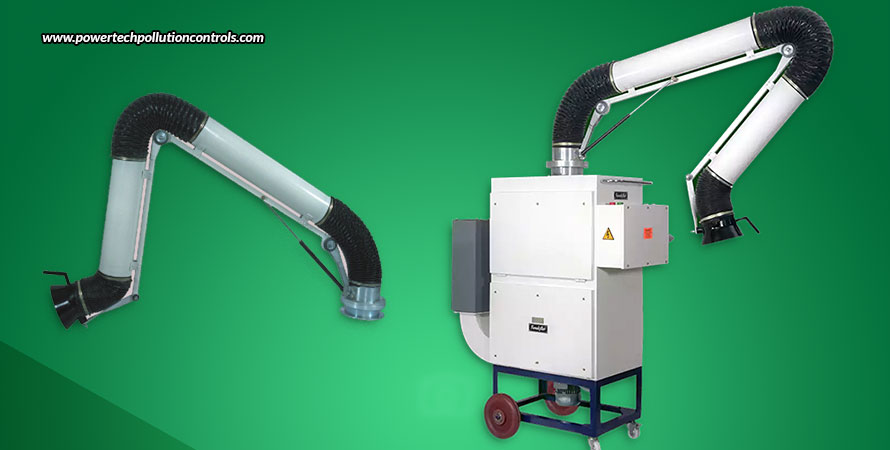
Fume Extraction Systems – Why And What?
Guaranteeing a proper ventilated space, where lots of fumes are raised, is certainly an intimidating task, but as much daunting as it may be, it’s necessary too. As we know how challenging it could be for you, we’ve come up with this blog that can guide you through the right fume extraction systems for your particular workshop or facility.
Types of fume extraction systems
There are two types of ventilation systems you can choose from – local exhaust ventilation and dilution ventilation.
Local exhaust ventilation systems
These systems remove aerial contaminants at or near the source, which brings about highest protection against toxic elements, as they’re captured even before they can mix with the workers’ breathing zone. These systems are the preferred method of fume removal, but only where there are a limited number of emission sources. Some examples include portable high vacuum, mobile fume extractors, stationary fume extractors, disposable filters, self-cleaning filters, and extraction hoods.
Dilution ventilation systems
These systems aim to reduce the concentration of airborne contaminants by introducing fresh or filtered air to acceptable exposure levels. Most dilution ventilation systems aim to fully cycle through the air at set intervals. These systems are mostly used in larger facilities. Two most popular examples are diluters are push-pull systems.
Custom solutions
You may also have a specific type of welding fume extractor customized for your particular kind of workspace. Depending upon the size of your facility, and the kind of processes being executed within, you may opt for a customized solution that fits your needs and requirements. This may incorporate both local exhaust and dilution ventilation simultaneously.
How does installing a fume extraction system prove to be beneficial?
No matter what kind of fume extraction system you may choose to install, but doing so is important, and beneficial too. Proper fume extraction can reduce the ill-health of employees, otherwise caused by fumes, such as metal fume fever. With ill-health reduced, employees take lesser leaves, and are in a better shape to work. This means that productivity in the workplace is boosted than what would be in a facility that is filled with fumes. Furthermore, keeping your facility free of contaminated air and dust particles decreases maintenance downtime and reduces the risk of fires and explosions.
What all to consider while selecting a fume extraction system?
Before deciding upon a particular fume extraction system for your facility, there are a few considerations that you should make, in order to make the right purchase. Some most common and important considerations include –
- The size of your facility
- The number of workers within the facility
- The amount of welding or soldering processes that take place
- Whether the processes take place all over the facility, or only in some specific pre-defined locations
Once you’ve reflected upon all such important aspects, you should be in a better position to take the right decision. For instance, if your facility is small, or your processes are quite limited, portable and mobile fume extractors can be excellent options. Similarly, for a larger facility, with heavy operations, you may choose to install extraction hoods or diluters. You must also choose from whether you want disposable or self-cleaning fume extractors. Disposable fume extractors need to be discarded as they reach their capacity, which means regular replacements and expenses. On the other hand, self-cleaning models may have a higher pricing, but they can prove to be cost-effective in the longer run, as their filters can be cleaned and re-used multiple times.
All fume extraction systems have different aspects, uses, and benefits. For optimal results, you can consult a fume extraction system manufacturer to determine the best system for your needs. Powertech Pollution Controls Pvt. Ltd. is one such welding fume extractor system manufacturer who can help with your fume extraction ventilation needs, keeping you and your workers healthy, and your facility free from risks and hazards.


